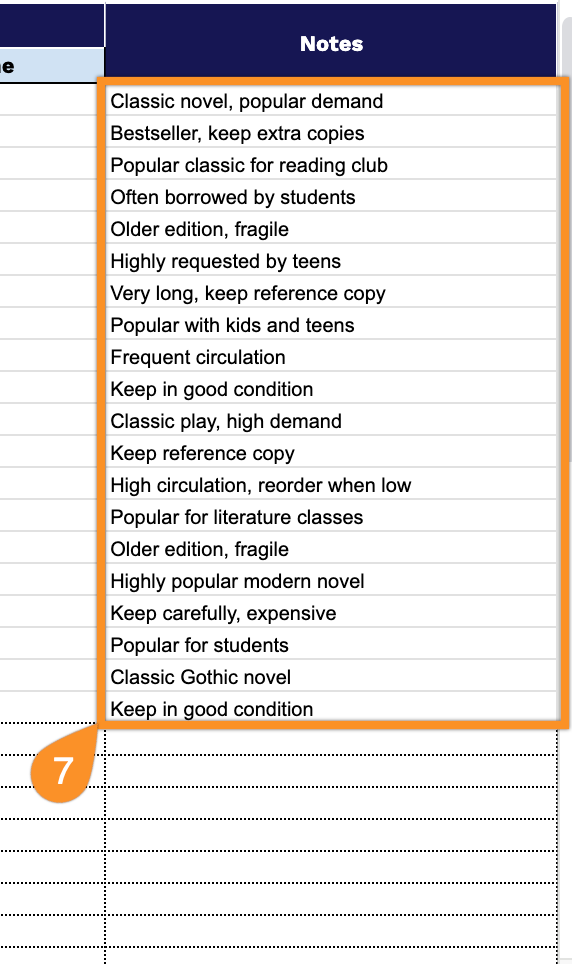Ever bought a book you already owned, or spent twenty minutes searching for one you swore was on your shelf? If your book collection has outgrown your memory, it’s time for a system.
Our free book inventory spreadsheet template helps you track what you own, who has borrowed what, and where everything is actually located. It works in Google Sheets, Excel, or PDF, allowing you to use whichever format suits your style.
No fees, no complicated setup. Just download it, customize it to match your needs, and stop losing track of your books.
Quick Jump
ToggleWhat Is a Book Inventory Spreadsheet?
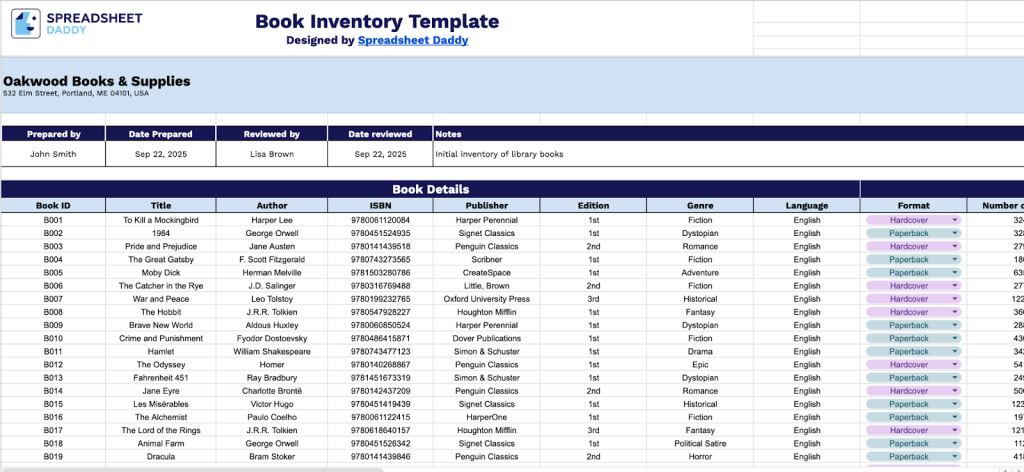
A book inventory spreadsheet is a digital file that allows you to keep track of all your books in one place.
People use these spreadsheets to manage personal libraries, avoid buying the same book twice, or keep their collections organized, whether they have a few dozen books or several thousand.
Download Spreadsheet Daddy’s Free Book Inventory Management Spreadsheet
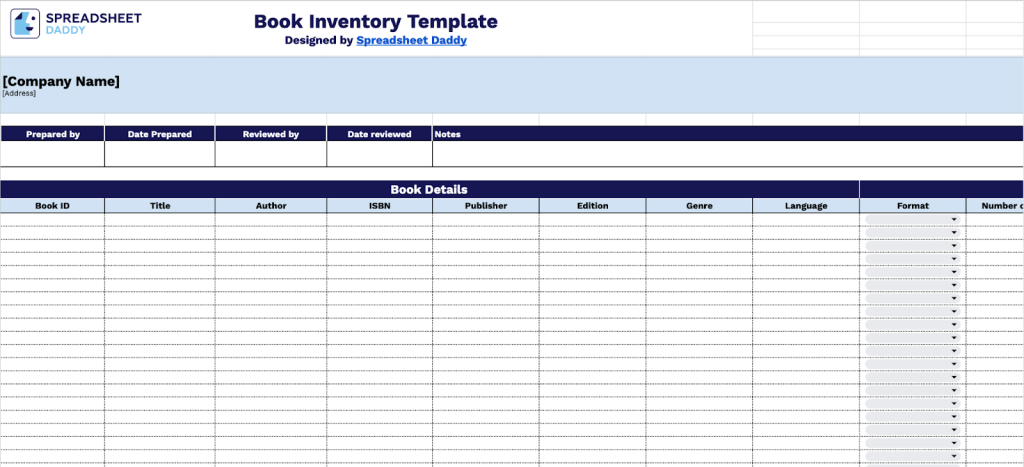
Our book inventory template helps you track and manage your book collection, whether you’re running a bookstore, library, or organizing a personal collection.
You can easily customize the template by adding or removing columns to match your specific requirements, giving you a flexible way to keep all your book inventory organized in one place.
What’s included
- Comprehensive book cataloging system: Track all essential bibliographic data, including Book ID, Title, Author, ISBN, Publisher, Edition, Genre, Language, Format, Number of Pages, and Dimensions. This ensures complete documentation of every book in your inventory for easy identification and reference.
- Condition and location tracking: Monitor the physical condition of each book and its exact storage location within your facility. This dual tracking system helps maintain quality control and enables quick retrieval of specific items when needed.
- Automated inventory management: Features Quantity on Hand and Reorder Level columns that work together to help maintain optimal stock levels.
- Financial tracking with automatic calculations: Includes Unit Price, Total Value, Purchase Date, and Purchase Price fields, each with built-in formulas that automatically calculate the total inventory value. This provides real-time visibility into your investment and asset worth without manual computation.
- Built-in supplier management: Track vendor contact details and lead times directly in the template. This helps streamline ordering processes and maintain consistent supplier relationships without requiring additional documentation systems. A flexible Notes section allows you to record special instructions, book conditions, or any further relevant information.
How to Use Our Book Inventory Spreadsheet Template
1. This template is accessible through copying the Google Sheets version or downloading it in your choice of Excel or PDF format.
2. Provide your business identification, address information, and inventory specialist details with the date of finalization. Include the manager’s identity and assessment date, using the Notes column for relevant remarks.

3. Complete the Book Details section by entering all essential bibliographic and identification information:
- Book ID: Enter the unique identifier assigned to track this specific book in your inventory system.
- Title: Record the complete title of the book as it appears on the cover or title page.
- Author: Specify the author’s name or names for proper cataloging and searchability.
- ISBN: Include the International Standard Book Number for universal identification.
- Publisher: Enter the publishing company that produced this edition of the book.
- Edition: Record the edition number or description (e.g., 1st edition, revised edition).
- Genre: Specify the category or classification of the book (fiction, non-fiction, reference, etc.).
- Language: Indicate the language in which the book is written.
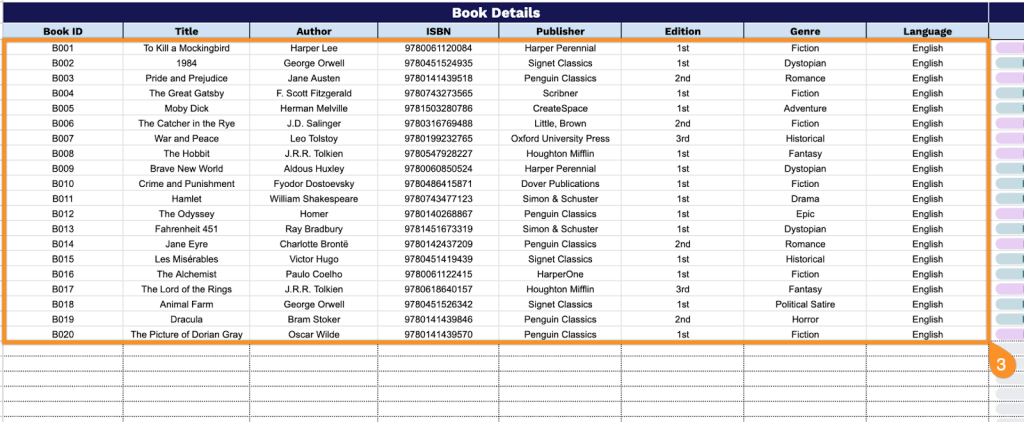
4. Document the physical characteristics in the Condition Details section for accurate inventory records:
- Format: Specify the physical form of the book (hardcover, paperback, audiobook, e-book, etc.).
- Number of Pages: Record the total page count as listed in the book.
- Dimensions: Include the physical measurements of the book.
- Condition: Assess and document the current state of the book (new, like new, good, fair, poor).
- Location: Enter the specific storage location or shelf position within your facility.
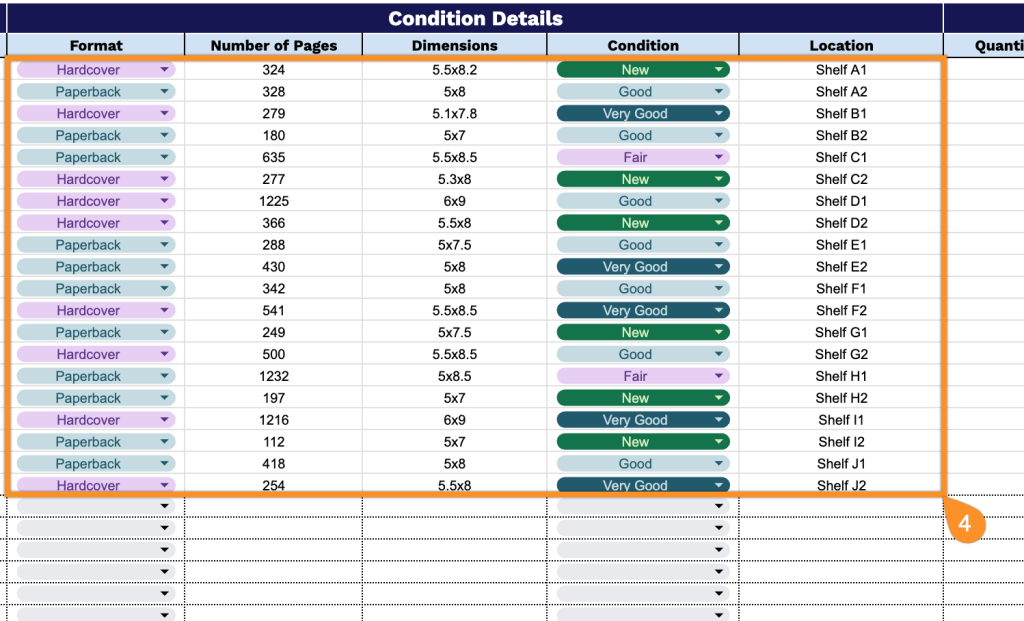
5. Manage stock levels in the Inventory & Stock Tracking section for effective supply chain control:
- Quantity on Hand: Record the current number of copies available in your inventory.
- Reorder Level: Set the minimum quantity threshold that triggers a reorder notification.
- Unit Price: Enter the selling price for each copy of the book.
- Total Value: The template automatically calculates the combined worth of all copies currently in stock.
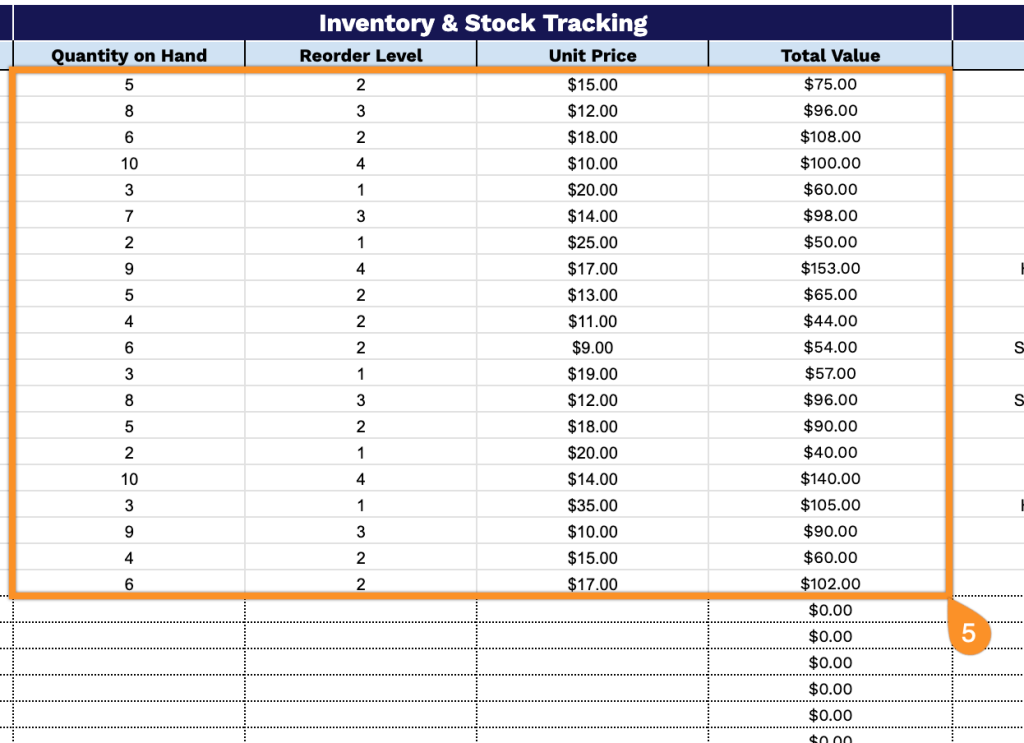
6. Track procurement details in the Purchase Information section for vendor management and cost analysis:
- Supplier: Enter the name of the vendor or distributor from whom the book was acquired.
- Purchase Date: Record when the book was ordered or received into inventory.
- Purchase Price: Document the cost paid per unit to the supplier.
- Contact Information: Include the supplier’s phone number, email, or other relevant contact details.
- Lead Time: Specify the typical duration between ordering and receiving new stock from this supplier.
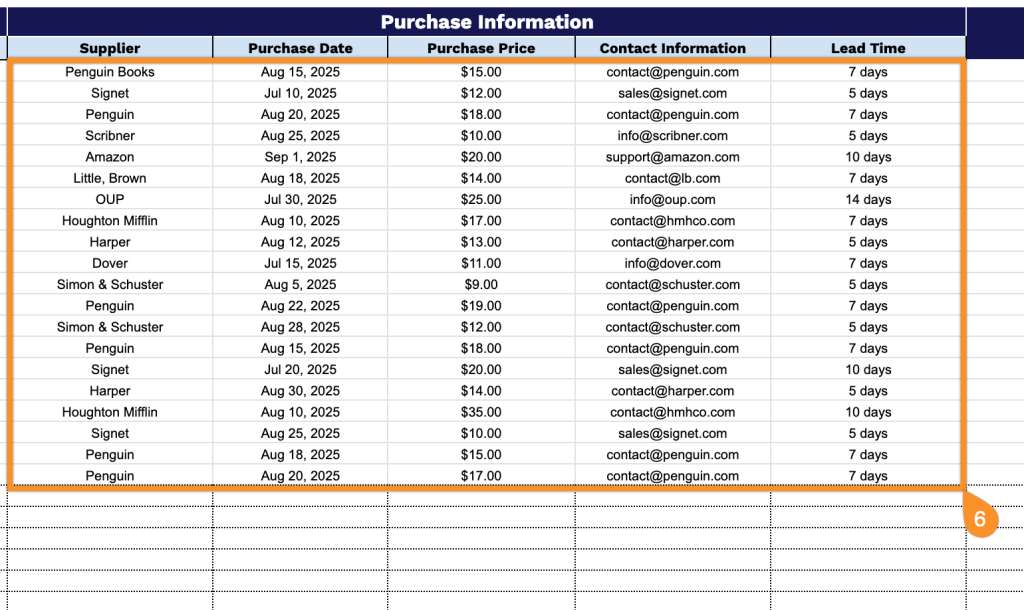
7. Use the Notes space to note any other important details about the book.
